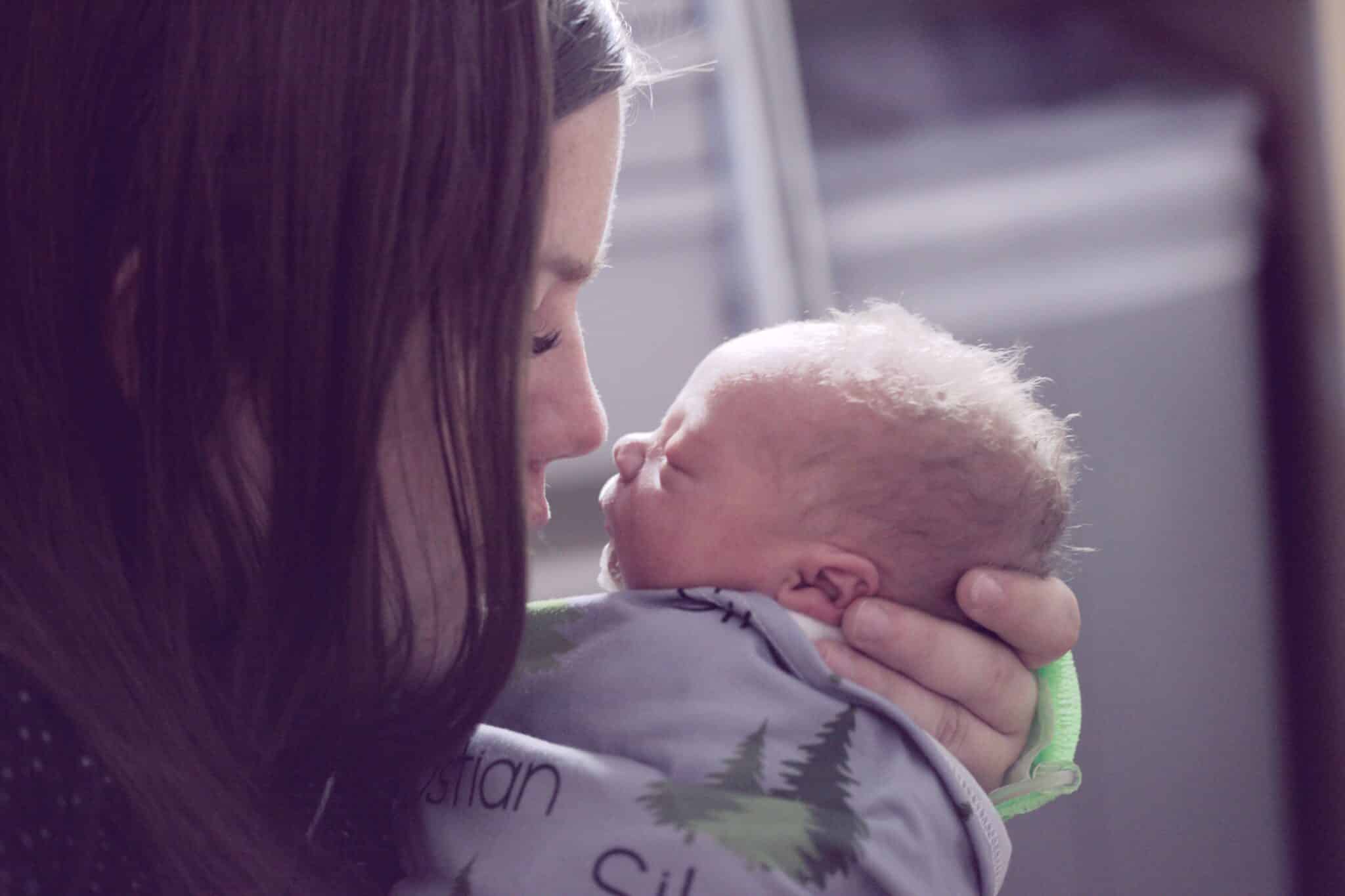Good Birth: The Underrecognized Risks of a “Successful” Labor and Delivery
Author’s Memo
This story explores childbirth-related trauma and postpartum mental health through the lens of a ‘good birth.’ It pulls from literature on both medical sociology and psychology to provide a more complete picture of the short- and long-term impact of having a successful yet complicated birth story.
For Rose and others like her, the birth of a child is transformative. Although it is often a joyful and personally fulfilling experience, women are at a higher risk for childbirth-related post-traumatic stress disorder[1](CB-PTSD) following a birth where there is either a real or perceived threat of death or serious injury to themselves or the baby[2]. Moreover, research shows that CB-PTSD can occur following a ‘successful’ birth that is full term with healthy clinical outcomes (Olde, van der Hart, Kleber, & van Son, 2006).
Diagnostic criteria for CB-PTSD are similar to PTSD that results from exposure to other traumatic or stressful events, including flashbacks of the incident, panic attacks, uncontrollable intrusive thoughts, sexual dysfunction, and passive/active suicidal ideation (APA, 2013). Individuals with CB-PTSD may also experience hyperarousal and hypervigilance that can lead to avoidance behaviors and difficulty sleeping (APA, 2013). Left untreated, CB-PTSD may have negative consequences for the mother and her relationships postpartum.
“This story explores childbirth-related trauma and postpartum mental health through the lens of a ‘good birth.’
Many risk factors have been linked to CB-PTSD, including but not limited to low social support, negative interactions with medical providers, and previous sexual or interpersonal trauma (Dekel, Stuebe, & Dishy, 2017). Studies show that two of the strongest predictors, however, are subjective distress during labor (e.g., prolonged labor, maternal feelings of a loss of control, fearing for one’s own life or the life of the baby, peritraumatic dissociation, severe uncontrolled pain) and obstetrical emergencies (e.g., emergency cesarean section and instrumental vaginal delivery) (Dekel, Stuebe, & Dishy, 2017; Theil & Dekel, 2020).
As was the case with Rose, after a ‘successful’ or ‘good’ birth the psychological impact of subjective distress and obstetrical emergencies on mothers’ wellbeing may be underestimated and/or minimized by medical professionals, partners, family members, and even the mothers themselves (Fielding-Singh & Dmowska, 2022). This can result in delayed treatment for those who experience CB-PTSD-related symptoms, but who feel guilt or stigma for talking openly about their struggles because of attempts to normalize their experience.
“Studies show that nearly a third of women rate their birth experience as traumatic…
Studies show that nearly a third of women rate their birth experience as traumatic, and also CB-PTSD and CB-PTSD-related symptoms in new mothers is estimated at between 3 and 16% (Ayers & Pickering, 2001; Grekin & O’Hara, 2014). Despite its prevalence, it remains understudied compared to other postpartum mental health conditions like postpartum depression (PPD) and is frequently overlooked or misdiagnosed by obstetrician gynecologists (Ayers, Wright, & Thornton, 2018; Cirino & Knapp, 2019). Importantly, because CB-PSTD is a condition that by definition stems from trauma stimuli within the birth environment (as opposed to hormonal changes or genetic factors) there is great potential for preventative and early-intervention treatments (Krzemieniecki & Doughty Horn, 2022).
References
American Psychiatric Association. (2013). Diagnostic and Statistical Manual of Mental Disorders, 5th Edn. Arlington, VA: Author. DOI: 10.1097/OGX.0000000000000680
Ayers, S., and Pickering, A. D. (2001). Do women get posttraumatic stress disorder as a result of childbirth? A prospective study of incidence. Birth, 28(2), 111–118.
Ayers, S., Wright, D. B., & Thornton, A. (2018). Development of a Measure of Postpartum PTSD: The City Birth Trauma Scale. Frontiers in Psychiatry, 9, 409.
Cirino NH, Knapp JM. (2019). Perinatal Posttraumatic Stress Disorder: A Review of Risk Factors, Diagnosis, and Treatment. Obstetrical & Gynecological Survey, 74(6), 369-376.
Dekel, S., Stuebe, C., & Dishy, G. (2017). Childbirth Induced Posttraumatic Stress Syndrome: A Systematic Review of Prevalence and Risk Factors. Frontiers in Psychology, 8: 560.
Etheridge J, Slade P. (2017). “Nothing’s actually happened to me”: the experiences of fathers who found childbirth traumatic. BMC Pregnancy Childbirth, 17(1), 80
Fielding-Singh, P. and Dmowska, A. (2022). Obstetric gaslighting and the denial of mothers’ realities. Social Science & Medicine, 301
Grekin, R., and O’Hara, M. W. (2014). Prevalence and risk factors of postpartum posttraumatic stress disorder: a meta-analysis. Clinical Psychology Review, 34(5), 389–401.
Krzemieniecki, A.J. and Doughty Horn, E.A. (2022). Counseling clients with postpartum posttraumatic stress disorder: A feminist-trauma approach. Journal of Mental Health Counseling, 44(2), 117-132.
Olde, E., van der Hart, O., Kleber, R., and van Son, M. (2006). Posttraumatic stress following childbirth: a review. Clinical Psychology Review, 26(1), 1–16.
Theil, F. and Dekel, S. (2020). Peritraumatic dissociation in childbirth-evoked posttraumatic stress and postpartum mental health. Archives of Women’s Mental Health, 23(2), 189-197.
[1] Also referred to a postpartum PTSD (PP-PTSD) and PTSD following childbirth (PTSD-FC) within the literature.
[2] Partners who witness trauma during childbirth are also at risk for developing CB-PTSD (Etheridge and Slade 2017).

Good Birth: The Underrecognized Risks of a “Successful” Labor and Delivery
The chime of the doorbell was especially jarring at only half past six. Rose had become accustomed to her early quiet hour, relishing in the silence before the haste of the day began to weigh on her like a thousand bricks. These moments of solitude—as well as her one filled-to-the-brim cup of black coffee—had become more essential to her daily successes than she liked to admit. This morning felt especially heavy despite it being reserved for a joyous celebration with close family and friends.
She jumped out of the sunken corner of her favorite overstuffed couch and ran on tiptoes toward the door—as if speed or stealth could stifle the noise at all. From upstairs, she heard the wail of her baby, Evaleen. Rose tensed, and then sighed in resignation. She unlatched the door and signed for the delivery of a full bouquet of pink and yellow balloons, the largest of which read Happy 1st Birthday.
“Rose had become accustomed to her early quiet hour, relishing in the silence before the haste of the day began to weigh on her like a thousand bricks.
She was pleased. The house was spotless and a hint of toasted vanilla hung in the air. A three-tiered white cake decorated with tiny yellow swirls and a pale pink drip was elevated in the center of an overly-polished dining table. Its miniature sat beside on a slightly lower pedestal. Rose secured the balloons to a dining chair and considered the best angle for pictures. The guests would arrive in a few hours. They would gather in this space to share stories of Eva’s first year. They would all cheer her tiny hands grasping clumsily at the smash cake, and laugh at her eyes widening with delight at the first taste of sugar.
Rose nodded with content, but as she turned to climb the stairs and ready herself for the day ahead, fear overtook her. She grabbed the banister with one shaky hand and lowered herself onto a carpeted step with the other. She squeezed her eyelids shut and tried to prepare for what would come next.
“This will pass, it’s not real, it’s not you she whispered to herself as she tried to shift her focus onto things more pleasant.
The immobilizing weakness in her core, the sweat that would drench her neck and chest, the lump that would grow in her throat until she could no longer swallow. Worst of all, the flashing images that would burrow into her mind’s eye despite her best attempts to shake them out. For a few moments, she thought it best to cancel the party. She could say she felt a migraine coming on, or that Eva had a fever. People would understand.
Only seconds passed before Rose regained her composure. She knew that some of the flashes were grounded in reality, but understood less so why some of them were not. Regardless, what mattered in this moment was that Eva was awake and hungry. She settled in to nurse, lifting her worn-thin sleeping shirt and guiding the latch. Rose had always enjoyed nursing. It was the one thing that had always come easy—mercifully—and somehow that ease allowed her to feel moments of calm even in her darkest hours. She closed her eyes and embraced the pinch and tingle in her breast as she glided back and forth in the rocker. As she allowed her head to fall back and rest, she saw it again. The same flash she had seen for months now. The most disturbing of them all.
“My body is designed to give birth. My body grew this baby and my body knows how to give birth to this baby she had repeated to herself. These were the affirmations she had practiced for months.
A gun, cold and pressed against the underside of her chin by her own hand. A quick, powerful explosion that left her mind quiet and floating in the peacefulness of a blackout room. The fleeting image was always the same. However momentary, it left Rose with a simultaneous sense of relief and guilt. Shake it off, Rose. She arched her neck to the left and to the right before pulling in a deep, controlled breath. This will pass, it’s not real, it’s not you she whispered to herself as she tried to shift her focus onto things more pleasant.
Looking down at the precious life in her arms, she began to reminisce about the day exactly one year ago that had changed everything. She recalled that when the pain arrived, it was right on time and felt exactly as had been described. A warm pressure, like long fingers reaching from her back around to her sides and gripping her swollen belly. The discomfort had not been unbearable. It was unexpectedly soothing, and it had made her smile. Just as planned, her world was placed on hold. She had so thoroughly prepared for this day that there had been little to do but wait.
“Stop crying! Ask questions! Say something!
Rest, hydrate, bake a blueberry crumble. Take a short walk and a long bubble bath. Love is patient—Rose had always said throughout the pregnancy—morning sickness be damned! She had known it would be especially important to practice active patience during labor. She had waited for her body to clock 5-1-1, just as instructed, and then placed the pre-packed overnight bag in the trunk of her car.
When she had arrived at the hospital, all was as predicted. More waiting. More breathing. A paper gown, and a quick chat about the birth plan. Rose’s body and mind had been fully prepared for the pulling and aching deep inside her. She navigated each contraction with steadiness and rhythm. It may be a little while still until it was time for the big debut, she knew, but all was as it should be. The hospital seemed surprisingly quiet, and although it was obnoxiously bright white, she would rest while she could. My body is designed to give birth. My body grew this baby and my body knows how to give birth to this baby she had repeated to herself. These were the affirmations she had practiced for months.
“Nevertheless, Rose had bore down. She had willed her body to re-energize and open up as she had imagined it would. It did not, but that’s why we have modern medicine!
At 29 hours in, however, something seemed amiss and then terrifyingly unpredictable. It is this part of the story that is less linear in Rose’s mind, but certainly just as vivid. The delivery nurse was no longer moving slowly and was no longer alone. Rose now saw swarming sets of eyes. Quick glances at monitors with brows both raised and furrowed. She heard discussions of surgeons who were somewhere else but on their way. Mumbles of stalling labor and decelerating heartbeats. Vocal urgency coming through oddly unruffled voices.
“We need you to turn over onto your right side, honey.”
“You will need to shift to your left side now.”
“OK! Here we go! We are going to lift you once more!”
The weight of sheer exhaustion held Rose down with a gravity she had never known. Despite the stoicism of the nurses and the smoothness with which they were able to manipulate her faltering body like a puppet, she had recognized that this delivery—and her pain—was quickly moving away from managed and into a crisis state.
“Let it go, Rose…
No one spoke to Rose directly for the next several minutes, at least not that she could remember. At some point, her perspective changed. She had drifted out of her own body and backed herself up against the ceiling squares above to watch the commotion. She had seen herself cry out in fear and then sit in silence as the team of strangers worked to intervene. How weak, she had thought about herself. Stop crying! Ask questions! Say something! She had watched as the nurses searched her body for piercings, released the bed’s locking mechanism, and rolled her toward the operating room.
Back in her body now, Rose had mustered, “is the heartbeat picking back up? Is the baby OK?” She does not remember a direct answer, but at some point she knew the baby must be alive because she began to hear mundane chatter amongst the nurses. Indeed, her sweet baby girl must have been thriving because it now seemed to just be another day at work for them.
“And they don’t call it labor for nothing!
To this day, Rose has trouble piecing it all together. They tell her that it was a successful delivery. It was, wasn’t it? Afterall, mother and child were alive and healthy, and that is what mattered most. And she was so incredibly grateful–as she should be–that Eva had not been born blue or sick. Surly face notwithstanding, Eva was lovely and had appeared a healthy shade and size when lifted above the waist drape for mom’s viewing pleasure. Not all new mothers were so lucky, Rose often thought to herself, and she was thankful to have been spared any kind of true trauma. Yes, everything went fine. It was over. Let it go, Rose, it’s done.
Yet even as a chorus of ‘we’re so happy for yous’ and other cheers of congratulations ring in her memory’s ears, she still has to work to make sense of it all:
Yes, labor went on forever and the pain was not exactly under control, but many of those hours had been wonderfully exciting and had unfolded just as expected. And they don’t call it labor for nothing!
“It had been a difficult recovery year for Rose. Brain-worm what ifs about potential mistakes, accidents, and tragedies affecting the health of her baby often unexpectedly hijacked her logic.
She had been given the opportunity to push. Sure, the doctor’s directives seemed humoring in tone. Nevertheless, Rose had bore down. She had willed her body to re-energize and open up as she had imagined it would. It did not, but that’s why we have modern medicine!
It was an emergency, sure, but the cesarean itself was over in a matter of minutes. Having surgery was not ideal by any means, but women have this procedure all the time!
Eva was safe. The fear she had seen dripping from the face of her partner had disappeared just as quickly as it had arrived, and the first sounds of crying were robust and immediate. And was that not the most joyful sound she had ever heard?
And everyone was so friendly. “You were in labor 29 hours, is that correct, Rose?” a nurse had asked as they monitored her vitals while her gaping belly was being stitched closed. “Most women experience either labor or cesarean, lucky you to get to experience both!” Everyone chuckled. That lightened the mood, didn’t it?
“At times, everyday life could feel like a minefield.
Rose felt the suckle release. She opened her eyes and looked around the minimalist nursery she had so thoughtfully curated. She propped Eva up her shoulder and began to gently pat until she heard the sound of a burp release. “Happy birthday to you, my love” she whispered into a tiny ear. She meant these words with all sincerity, despite the hot tears rolling down her cheeks.
It had been a difficult recovery year for Rose. Brain-worm what ifs about potential mistakes, accidents, and tragedies affecting the health of her baby often unexpectedly hijacked her logic. At times, everyday life could feel like a minefield. If she was not mindful enough, a nickel might fall out of her wallet and onto the floor to become an unnoticed choking hazard. If she was not attentive enough, she might not see the warning signs of severe illness and would miss an opportunity for early intervention. If she was not safe enough, every river bridge she drove over could mean plotting an underwater escape from the safety seat. If she did not listen closely enough at night, a stranger could silently enter her home and steal her baby away forever.
“I would not survive that she would think to herself, even as she understood that these extreme day-to-day highs and lows were also not sustainable.
I would not survive that she would think to herself, even as she understood that these extreme day-to-day highs and lows were also not sustainable.
Rose would get up now, sugarcoat her darkness and get through the day just as she did every day. Maybe she would be gentler on herself this next year, offer herself more grace. She had rarely talked about the birth—it just was not possible without crying—but perhaps it would do her some good to reach out to her doctor or a therapist of some sort. For today, however, she would dry her eyes, gloss her lips, and push these flashes to the back of her mind. Afterall, today was a celebration.
Credits
Image of a woman by Velizar Ivanov by Unsplash
Featured image by Alexander Grey for Unsplash
Learn More
New to autoethnography? Visit What Is Autoethnography? How Can I Learn More? to learn about autoethnographic writing and expressive arts. Interested in contributing? Then, view our editorial board’s What Do Editors Look for When Reviewing Evocative Autoethnographic Work?. Accordingly, check out our Submissions page. View Our Team in order to learn about our editorial board. Please see our Work with Us page to learn about volunteering at The AutoEthnographer. Visit also Scholarships to learn about our annual student scholarship competition.
Lisa Winters is currently an Associate Professor of Sociology at Coastal Carolina University where she teaches courses on Medical Sociology, Victimology, and Family.











